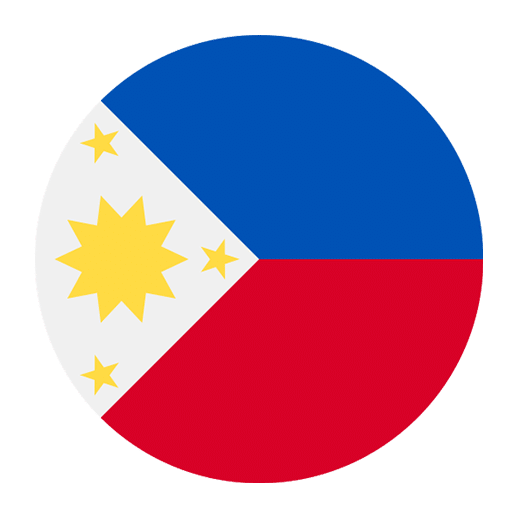Preparing for a trip to the Philippines by learning Tagalog can be an incredibly enriching experience. Tagalog, also known as Filipino, is the national language of the Philippines and spoken by millions of people. Learning even the basics of Tagalog will not only enhance your travel experience but also enable you to connect more deeply with the local culture and people. Here’s a comprehensive guide to help you prepare for your trip by learning Tagalog.
Understanding the Importance of Learning Tagalog
When you travel to a foreign country, knowing the local language can significantly improve your experience. In the Philippines, English is widely spoken, but knowing Tagalog can make your interactions more meaningful.
Cultural Connection: Speaking Tagalog helps you connect with locals on a deeper level. It shows respect for their culture and can lead to more authentic experiences.
Practical Benefits: Understanding and speaking Tagalog can make navigating public transportation, ordering food, and asking for directions much easier.
Safety: In case of emergencies, knowing the local language can be crucial. You can communicate more effectively with locals and authorities.
Basic Tagalog Phrases to Know
Before diving into more complex aspects of the language, it’s essential to familiarize yourself with some basic phrases. Here are a few to get you started:
Greetings:
– Hello: Kamusta
– Good morning: Magandang umaga
– Good afternoon: Magandang hapon
– Good evening: Magandang gabi
Common Phrases:
– Thank you: Salamat
– Please: Pakiusap
– Yes: Oo
– No: Hindi
– How much?: Magkano?
– Excuse me: Paumanhin
– I’m sorry: Pasensya na
Questions:
– Where is…?: Nasaan ang…?
– What is your name?: Ano ang pangalan mo?
– How are you?: Kamusta ka?
Language Learning Resources
To effectively learn Tagalog, you’ll need to use a variety of resources. Here are some suggestions:
Books: There are numerous Tagalog language books available that cater to different levels of proficiency. “Elementary Tagalog: Tara, Mag-Tagalog Tayo! Come On, Let’s Speak Tagalog!” by Jiedson R. Domigpe and Nenita Pambid Domingo is a great starting point.
Online Courses: Websites like Duolingo, Babbel, and Rosetta Stone offer structured Tagalog courses that you can follow at your own pace.
Mobile Apps: Apps like Drops, Memrise, and HelloTalk can make learning Tagalog fun and interactive.
Podcasts and YouTube Channels: Listening to Tagalog podcasts or watching YouTube videos can help improve your listening skills. Channels like “Learn Tagalog with Fides” offer valuable lessons.
Language Exchange: Platforms like Tandem or ConversationExchange allow you to practice Tagalog with native speakers. This can be an excellent way to improve your conversational skills.
Practice Regularly
Consistency is key when learning a new language. Try to incorporate Tagalog into your daily routine as much as possible.
Set Goals: Establish clear, achievable goals for your language learning. For example, aim to learn 10 new words every day or practice speaking for 15 minutes daily.
Daily Practice: Dedicate a specific time each day to study Tagalog. This could be in the morning, during lunch breaks, or before bed.
Flashcards: Use flashcards to memorize vocabulary. Apps like Anki can help you create digital flashcards that you can review on the go.
Immersion: Surround yourself with the language. Watch Filipino movies, listen to Filipino music, and try to think in Tagalog as much as possible.
Understanding Tagalog Grammar
Tagalog grammar can be quite different from English, so it’s essential to understand its basic structure.
Pronouns: Unlike English, Tagalog pronouns change based on their function in the sentence. For example:
– I/me: Ako
– You: Ikaw (informal), Kayo (formal)
– He/She: Siya
– We (inclusive): Tayo
– We (exclusive): Kami
Verb Conjugation: Tagalog verbs are conjugated based on aspect rather than tense. The three main aspects are:
– Completed (Past): Kumain (ate)
– Incompleted (Present): Kumakain (eating)
– Contemplated (Future): Kakain (will eat)
Sentence Structure: Tagalog typically follows a Verb-Subject-Object (VSO) order. For example:
– Kumakain ako ng mansanas. (I am eating an apple.)
Cultural Tips
Understanding the culture is just as important as learning the language. Here are some cultural tips to keep in mind:
Respect: Filipinos place a high value on respect. Use polite forms of address and show respect to elders and authority figures.
Hospitality: Filipinos are known for their hospitality. Accepting invitations and trying local food are great ways to show appreciation.
Non-Verbal Communication: Filipinos often use non-verbal cues, such as raising eyebrows to say “yes” or pointing with their lips. Being aware of these can help you better understand and communicate with locals.
Practice Speaking with Locals
One of the best ways to improve your Tagalog is by practicing with native speakers. Here are some ways to do this:
Language Exchange Partners: Find language exchange partners through websites or apps. You can help them with English while they help you with Tagalog.
Community Events: Attend Filipino community events or join cultural organizations. These can provide opportunities to practice speaking and learn more about the culture.
Travel: Once you arrive in the Philippines, take every opportunity to speak Tagalog. Engage with locals, ask questions, and don’t be afraid to make mistakes.
Using Technology to Aid Learning
In the digital age, technology can be a powerful tool for language learning. Here are some ways to leverage technology:
Language Learning Apps: Use apps like Duolingo or Babbel for structured lessons and practice.
Speech Recognition: Many apps have speech recognition features that can help you improve your pronunciation.
Online Communities: Join online forums and social media groups focused on learning Tagalog. These can provide support, resources, and practice opportunities.
Virtual Reality: Some VR applications offer immersive language learning experiences, allowing you to practice Tagalog in virtual environments.
Overcoming Challenges
Learning a new language can be challenging, but with the right mindset and strategies, you can overcome these obstacles.
Fear of Making Mistakes: Don’t be afraid to make mistakes. They are a natural part of the learning process. The more you practice, the more confident you’ll become.
Consistency: Stay consistent with your practice. Even on busy days, try to spend at least a few minutes reviewing vocabulary or listening to Tagalog.
Motivation: Keep your motivation high by reminding yourself of the benefits of learning Tagalog. Set milestones and reward yourself for achieving them.
Immersing Yourself in the Language
Immersion is one of the most effective ways to learn a language. Here are some strategies for immersing yourself in Tagalog:
Travel: Spend time in the Philippines and immerse yourself in the language and culture. Engage with locals, participate in community activities, and explore different regions.
Homestays: Consider staying with a Filipino family during your trip. This will provide ample opportunities to practice Tagalog and experience local customs.
Language Schools: Enroll in a language school in the Philippines. Intensive courses can help you improve rapidly.
Making the Most of Your Trip
When you arrive in the Philippines, make the most of your language skills by:
Interacting with Locals: Engage in conversations with locals whenever possible. Visit markets, join local tours, and participate in community events.
Exploring Different Regions: The Philippines is a diverse country with various languages and dialects. Exploring different regions can give you a broader understanding of the culture and language.
Documenting Your Experience: Keep a journal of your experiences and language learning progress. This can serve as a valuable memory and a way to track your improvement.
Conclusion
Preparing for a trip to the Philippines by learning Tagalog is a rewarding endeavor that will enhance your travel experience and allow you to connect more deeply with the local culture. By using a variety of resources, practicing regularly, and immersing yourself in the language, you can make significant progress in your Tagalog skills. Embrace the challenges, celebrate your successes, and enjoy the journey of language learning. Maligayang paglalakbay! (Happy travels!)

